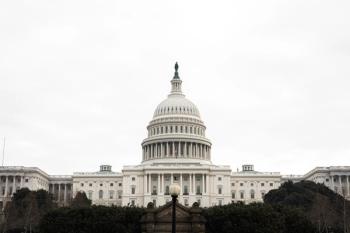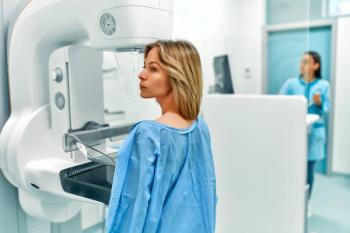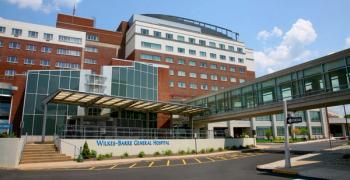
Geisinger CEO Jaewon Ryu makes case for value-based care | HLTH Conference

The head of the Pennsylvania healthcare system cites the ability to invest in programs to help patients live healthier lives. And he says those efforts are paying off.
Las Vegas - Jaewon Ryu said the goal of moving healthcare one click to the left isn’t quite on target.
“It’s really about moving care one click toward the center,” said Ryu, the president and CEO of Geisinger, the Pennsylvania-based healthcare system.
“We’ve been on a journey to build our delivery system focused on the center,” Ryu said.
Speaking at the HLTH Conference, Ryu outlined impressive statistics demonstrating the effectiveness of Geisinger’s home-based health program and an initiative to help patients get better food.
To engage in such efforts, Ryu said, “You need a payment model that supports it.” And that’s where he made the case for health systems to move more toward value-based care, and away from the traditional fee-for-service model.
With value-based care, health systems are rewarded for improving patients’ health, and are essentially taking on the risk that they will be successful in keeping patients healthy, or at least from avoiding more costly care.
Ryu said health systems can take a step toward to the center if they can get patients to the urgent care instead of the emergency room, and move even closer by getting to a primary care physician or treatment in the home. But the ultimate, he said, is preventing illness so there’s no need for care.
“Toward the center you get greater affordability, you get better health outcomes,” Ryu said. And patient satisfaction improves, he added.
Geisinger is an atypical system, he acknowledged. The organization manages 10 hospital campuses and a health plan with more than 500,000 members. But he implored healthcare leaders to move toward value-based care, even if it’s just one step.
Ryu said some people say, “It’s easy to do when you have your own health plan.”
“For any of us, it’s a journey and you start where you start,” he countered. “As you take bites at this, it takes you further down to the continuum to reach this kind of model.”
Value-based care also offers the opportunity to reduce disparities in healthcare outcomes, and he said the fee-for-service model essentially fosters inequity. Hospitals get far less reimbursements in Medicare and Medicaid, which have disproportionately minority populations, than they get from commercial payers. With a value-based model, health systems can focus on health efforts that can improve quality for all.
“Your focus is still on better health and we think that creates a more equitable environment,” Ryu said. “It shifts how you deliver care.”
Geisinger’s “Fresh Food Farmacy” program provides diabetes patients with 10 healthy meals each week. With the patients in that program, Geisinger has seen a 12% drop in acute care readmissions and a 29% decrease in emergency departments visits. In addition, Geisinger reports a 28% improvement in glucose management.
“The food program is double the impact of medications and traditional treatments,” Ryu said.
The Geisinger at Home program, which brings healthcare professionals to patients’ homes to manage complex conditions, has enjoyed considerable success, Ryu said. Patients in those programs have 36% lower hospitalization rates, and they have seen a 20% reduction in emergency department visits.
“All of these programs are dependent on the ability to improve somebody’s health and have a business model that supports that,” Ryu said.
Geisinger has also worked to utilize data better. He talked about how utilizing artificial intelligence helped Geisinger identify patients at risk for colon cancer.
Early in the COVID-19 pandemic, health systems across the country essentially stopped elective procedures, such as colonoscopies. With the system seeing a backlog of more than 30,000 patients for colon cancer screenings, Geisinger wanted to identify those patients who were at higher risk for colon cancer and wanted them to get scheduled first.
Geisinger’s algorithm identified the 3% of patients at the highest risk of colon cancer so they could be examined as quickly as possible.
“Time in cancer is not your friend,” Ryu said.
Again, Ryu said it all comes down to changing how healthcare is financed to devise a more sustainable system.
With a value-based approach, Ryu said, “We have a better shot at maintaining better health.”

















































